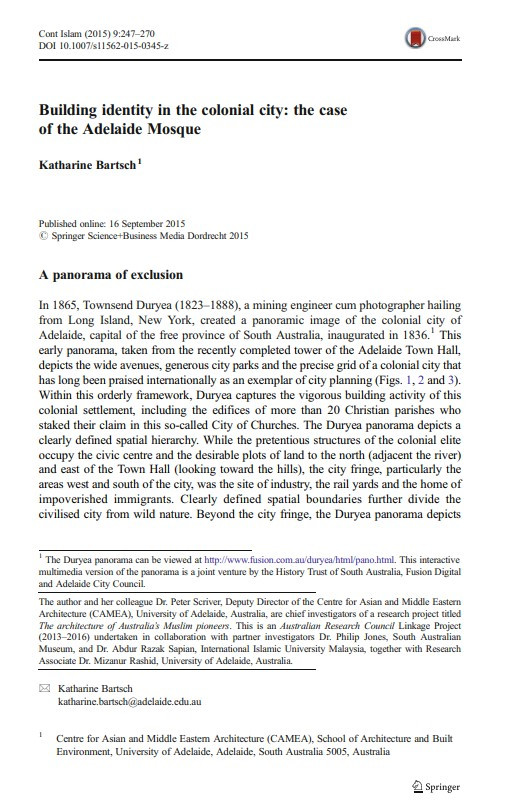
In 1865, Townsend Duryea (1823–1888), a mining engineer cum photographer hailing
from Long Island, New York, created a panoramic image of the colonial city of
Adelaide, capital of the free province of South Australia, inaugurated in 1836.1 This
early panorama, taken from the recently completed tower of the Adelaide Town Hall,
depicts the wide avenues, generous city parks and the precise grid of a colonial city that
has long been praised internationally as an exemplar of city planning (Figs. 1, 2 and 3).
Within this orderly framework, Duryea captures the vigorous building activity of this
colonial settlement, including the edifices of more than 20 Christian parishes who
staked their claim in this so-called City of Churches. The Duryea panorama depicts a
clearly defined spatial hierarchy. While the pretentious structures of the colonial elite
occupy the civic centre and the desirable plots of land to the north (adjacent the river)
and east of the Town Hall (looking toward the hills), the city fringe, particularly the
areas west and south of the city, was the site of industry, the rail yards and the home of
impoverished immigrants.
I agree to the terms outlined below:
You agree to upload and assign Mosqpedia Database the rights to use the content worldwide and in perpetuity across all current and future media platforms. Mosqpedia Database may edit, copy, adapt and translate your contribution.
The content will be distributed under the Creative Commons Attribution-Deed – Attribution-NonCommercial-NoDerivatives 4.0 International – Creative Commons
All data will be stored in line with data protection regulations.